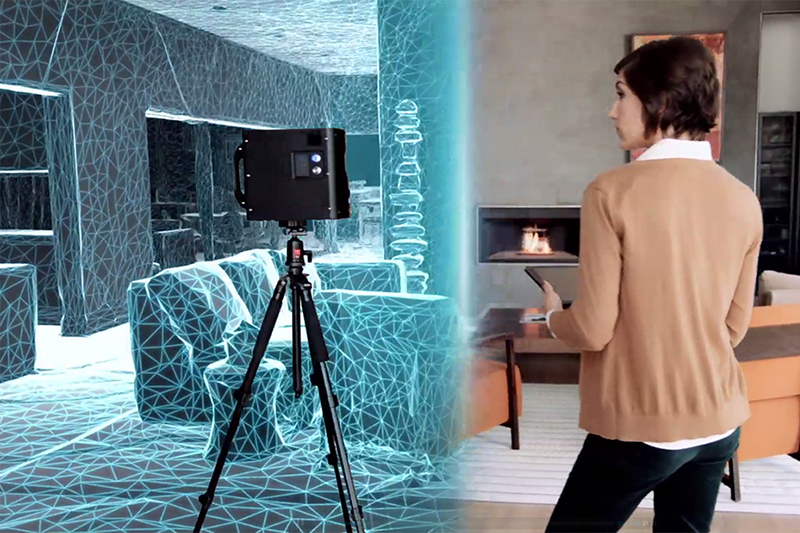Detailing your home is just the first step in creating a great first impression. The next step is to “stage” your home to generate warmth, ambiance, and to simulate the imagination of your buyers.
You might be familiar with the concept of “staging,” since any number of cable television real estate shows have highlighted the impact that makeovers can have on home values. Staging is literally “setting a stage,” orchestrating interesting scenes in each room that attract the attention of your buyer audience and create appealing impressions.
Detailing is, of course, the first step of staging. Once you have cleared, cleaned, and neutralized your home, you can then take a step back and think about the impression you’re trying to create for your buyers. Most homes do not even need any extensive staging once the fundamental detailing work has been completed.
But if you do want to take that extra step and actually stage each room, consult with your agent about the impressions you want to create. You don’t need to be up on all the latest design fashions, or spend a fortune to stage your home. You just need a little bit of money, some common sense, and a commitment to spend some time examining your home in a different light. If you want expert assistance, then your agent can recommend a professional stager to come in and help.
The art and practice of staging could and has filled up books, but we will simply highlight some fundamental principles that you should keep in mind:
1. Accept that staging is all about style, not substance.
Staging your home requires that you think about the way your home looks, not about what it’s like to live in. It might be that the dining table is a convenient place to stack your mail and old newspapers, particularly if you never eat at it, but staging the home requires that you give up a little bit of convenience and ease-of-living to create the right impression. It’s like wearing high heels or a bow tie to a formal dance: not the most comfortable choice, but the one that creates the right impression.
If you stage your home, you have to sacrifice utility for style, and highlight how things look rather than how they fit into your life. Your buyer won’t notice that the vase of fresh flowers on the coffee table blocks the view of the television, or that there’s no garbage can in the master bedroom, or that it’s annoying to hang your coat in the foyer coat closet rather than on a peg in the laundry room. Your buyer doesn’t live there, so all she’s going to notice are the beautiful flowers in the family room, the clean lines of the bedroom, and the clutter-free laundry.
The nice part is that you’ll be living in one of those developer style “model homes.” The downside, of course, is that no one actually has to live in those model homes, so you’re going to have to sacrifice a little comfort to create those impressions.
2. Decide what story you want to tell about each room.
The best way to stage a room is to stand at the entrance point to each room, look around the room from that vantage, and think about what story you want to tell about the room. What story will appeal to your buyers? If it’s a dining room, consider actually setting the table with your best service, along with a dried flower arrangement as the centerpiece. Everyone who comes in will know that you’re not actually having a formal dinner that day, but the impression still gets made. The story is important, because it helps buyers visualize themselves living that life, in that home.
Moreover, every room needs a center of attention. In the dining room, it’s the table already set for a dinner. In the living room or great room, it might be a fireplace or wall-mounted flat screen television. In every room, you want to highlight a great feature and draw the buyer’s eye to it. If the room does not have a great feature, then you need to create one, using some accessories you can buy cheaply. A mass market vase filled with dried flowers on a mantle can change the focus of an entire room.
3. Mix textures, shapes, eye levels, and colors (within reason) in each room.
The key to staging is consistently attracting the attention of a buyer from room to room, drawing the eye where you want it to go. And the best way to keep buyers interested is to mix their eye levels – you want them looking up and down, side to side as they go through your home. It just makes things more interesting.
The same goes for textures, shapes, and colors. From a staging perspective, furnishings and accessories that are identically sized, shaped, and symmetrical are dull and uninteresting. You want to mix it up a bit with soft and hard things, square and round things, tall and short things, to keep up the variety.
The same goes for color. You want a splash of color in every room to draw the eye and create an interesting impression. But think of color like perfume: a little bit is great, and too much can be overpowering. Bold color can be used to highlight the best parts of a room, or it can be a distraction. If you have any concerns that adding some bold color will actually detract from the impression you’re trying to make, stick to neutral colors: beiges and light blues, reds, and greens. The same goes for patterns: don’t feel that you need to replicate the latest cutting edge styles from design shows when all you’re trying to do is create a pleasing impression to buyers coming to see your home. You don’t need to take risks when staging.
4. Don’t forget the other senses.
Most staging involves the eye, but the other senses come into play as well. It’s amazing how much the other senses can subtly affect the emotional response of a buyer, who may not even realize that the soft music in the background and the gently wafting scent of flowers is why she feels so relaxed in your home. You need to titillate those senses.
Engaging the ears of your buyers is easy. Just have soft music played during showings, unobtrusively in the background. The type of music depends on what type of response you’re trying to create: soft jazz if you’re trying to create a relaxing feeling, light classical (more strings than horns) if you want to send a certain upscale ambience, or even just light pop if you want things to be casual. If you don’t have a good sense of how music evokes a mood, go into one of your favorite restaurants or shops and listen to what they are playing to relax their customers.
Similarly, scents can be used in a positive way, even though most of the time that buyers smell things in a home it’s not a good thing. Once unpleasant smells are dispelled during detailing and cleaning, you want to use scents to evoke another type of emotional response. Again, you want a light touch (just like perfume) so you do not overwhelm. But the use of subtle positively-associated scents — flowers, cookies baking, even the faint scent of cleaning products in bathrooms and kitchens – can create an enormously favorable reaction.
5. Don’t spend a lot of money.
Finally, do not feel you need to spend a lot of money. Have you ever looked closely at the furniture and accessories that you find in a model home? Probably not. And neither will the buyers coming to your home. You can get great design and color ideas from a couple of design magazines that you can pick up at any bookstore, and incorporate them cheaply into your staging plan by picking up cheap items at discount stores. You’re not likely to keep any of your staging props, so you don’t need to spend money on them.
Should you hire a professional stager? If it were up to real estate brokers, we would urge every single seller in Hudson Valley, Westchester, and Northern New Jersey to hire a professional designer to stage a home for sale. We believe in the power of staging to sell your home. Even if you want to hire a professional stager, though, we would recommend someone who will do a consultation for a set fee, and then give you a chance to decide whether you want to go further. That said, a home seller who does a great job detailing and cleaning a home is about 80% of the way to a fully staged home, so the question is more about whether
you think it’s worth the investment in a stager to turn a good impression into a great one.

 Facebook
Facebook
 X
X
 Pinterest
Pinterest
 Copy Link
Copy Link




